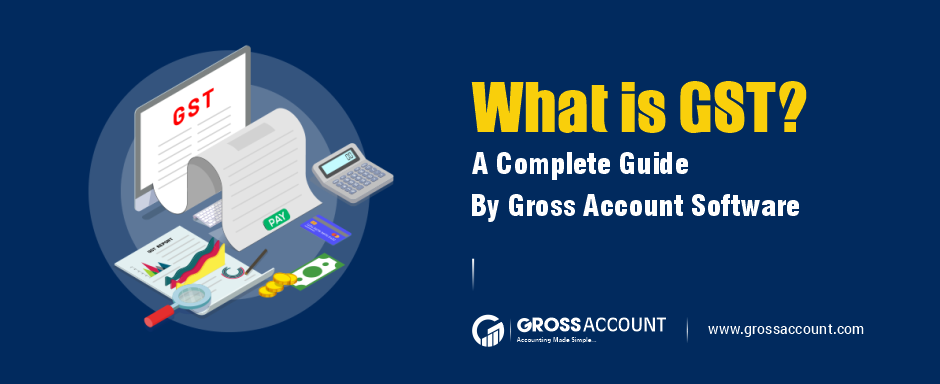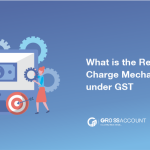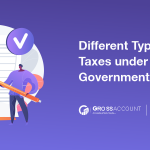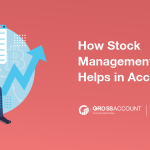Introduction
Specially designed and developed for small businesses, retailers, etc., Gross Account is easy to use software for accounting and GST software billing related tasks. This software is a full package of advanced and easy to use features.
This software quickly does day to day financial and accounting data and invoice generation and storage. Automated reminders for generating or collecting payments can save a lot of time, which is one of the software’s important features.
Our accounting software development team works with a customer-centric approach, giving the maximum customer satisfaction even after the software is purchased and deployed in an organization. It is one of the plus points of the company.
The software also has an open-source version where the user tin easily downloads the installation package for free from the Gross Accounts’ official website so that one can start using its basic functionalities that are available open-source. One tin makes storage of all types of accounts related to his business. Also, this software tin is used in various business niches.
One of the advantages of this software is that it manages all the tasks without connecting to the internet. Hence, you do not need to worry about online storage or high-speed internet connectivity for implementing this software.
Multiple types of reports tin also are generated using our free accounting software. It becomes a tedious task to maintain all the reports and the relevant data with a single hand, without any automation. Gross Accounts removes this drawback of man
all efforts by making all the tasks done in a few clicks and a few taps on the keyboard!
Also Read: How Does An Accounting Software Manage Your Sales & Taxes?
What is GST?
An abbreviated form of Goods and Services Tax, GST has removed taxes on the sales of goods and services like; value-added
tax, excise duty, service tax, etc. All of these taxes are merged into a single tax, GST.
As the name says, the tax has been levied on the import and exporting of various goods and services. This tax has been levied on every value addition known for its being based on the destination, comprehensiveness, and multi-leveled stages. Shortly, it is a standalone tax covering all the other indirect taxes applied to the goods and services.
The structure of the indirect taxes levied on the goods, before the introduction of GST, was something like this:
while buying raw materials, the manufacturers were bound to pay the value-added tax, shortly, VAT. When this product manufacturer sold it to the wholesale person or some warehouse, he would levy the extra charges with VAT, plus the excise duty. In turn, while selling to the retailer, the wholesale person would again charge VAT to him. And finally, when the customer purchases that product from the retailer, he would have to pay the VAT as an extra amount.
In the case of GST, the tax is levied everywhere the sales are made. Hence, it is known as a multi-stage tax. If the products have been imported or exported intrastate, then GST’s sub-portions, State GST, and Central GST will be levied on the product.
Now considering the above scenario, we discussed what happened before GST. Now let us take the same example after the introduction of GST.
The manufacturer makes the production of biscuits. Hence, he will require purchasing raw materials like sugar, flour, etc. Initially, it is just flour and sugar we are talking about. But once they are baked into biscuits, its value increases.
Once these biscuits are prepared, the manufacturer sells them to the warehouse, purchases them in a large quantity, and labels them accordingly. Once the biscuits are labeled, the value for the biscuits increases again. Now, the warehouse owner sells these biscuits to the retailer.
From large cartons and packages, the retailer separates these biscuits into smaller units to be sold individually. Hence, the value of these biscuits increases again.
Every time the value increases, GST is levied and collected at the final stage when sold to a customer by the retailer.
Also, we discussed that the GST is destination-based; when the product manufactured in Gujarat is sold in Maharashtra, GST is levied from where the final purchase is made, and the entire taxation procedure will be carried out in Maharashtra instead of Gujarat.
What are the rates implemented?
The rates of GST are divided into six categories, also known as slabs, which can be mentioned as follows:
- No tax applicable to certain goods, also known as exemplary products.
- 0.25% rate.
- 5% rate.
- 12% rate 18% rate.
- 28% rate.
A broader and detailed classification of the applied GST rates can be listed as follows:
- 0.25% tax is levied upon the semi-polished and cut type of jewelry stones.
- 5% tax is levied on the products useful for household chores like edible oil, sugar, spices, tea, coffee, medicines, sweets, coals, etc.
Apart from these, transportation of vessels overseas, the printing of newspapers, renting of fuel fewer motors, pilgrimage transportation through flights, tours, travel services, leasing of air crafts, publishing ads in printed media, etc. are also included in this slab.
12% tax is levied on computer accessories, processed food, transportation of containers including of goods through railways, traveling by air- does not include the economy travel, services provided by the restaurants and accommodation where GST is between Rs 1000 to INR 2500.
IP rights for temporary usage, hotel accommodation, etc.
- 18% tax is levied for industrial and capital goods like soaps, toothpaste, hair oil, etc. Services provided by the restaurants like a liquor license, AC, outdoor catering and decoration, per day stay charges between Rs 2500 and INR 5000.
- Hotel accommodations charging above INR 7500.
- Entertainment mediums such as magic shows and circus, supply at work contracts, etc. are also included in the same slab of 18%.
- 28% tax is levied on items like cars, bikes, etc. on cigarettes and aerated drinks. The services provided for amusement, entertainment, AC services included in 5-star hotels, events for sports, racing, gambling like the casino, etc. are also a part of the 28% rates slab.
Types of GST:
Three types of GST apply to the product based on the state, center, and integration.
These are:
- CGST- abbreviated form of Central Goods and Services Tax, it is being collected by the central government on the intrastate sales of goods.
- SGST- abbreviated form of State Goods and Services Tax, which is being collected by the state government for selling goods in the same state.
- IGST- the central government collects this tax on interstate sales, also known as Integrated Goods and Services tax.
The GST levied on the intrastate sales summarizes the SGST and CGST, whereas Integrated GST for interstate sales.
The revenue collected from intrastate sales is divided amongst the state as well as the government. In the interstate sale, the revenue is divided between the central government and the destination where the sale is made.
What is GST Returns and How to File GST returns?
GST has been levied all over India since July 2017. The entrepreneurs running their businesses in India, who are liable for paying taxes, have to file for GST return, according to the slabs defined by the GST Council.
The process of GST returns described as the filing of taxes using the forms for GSTR, As per the applicable rates and the criteria, which is the eligibility to the firm.
You can file a GST return online simply by following the given steps:
- Visit the portal- www.gst.gov.in
- Acquire the GSTIN Number, which is a unique identity for filing GST, which will contain your state code and your PAN number.
- Upload all the invoices on the portal. The portal will assign you a reference number for the invoices generated.
- Once the documents like invoices, inward and outward flow, the average return for a month, etc. are uploaded, check if there are any errors, and if there are no errors, file the return.
Other important concepts in GST
As discussed earlier, the GST applies to the stages where a sale is made and where a product’s value sees an increment. Hence, let us define these stages, where GST is applicable:
1. Multi-stage
From manufacturing to sending it to the warehouse and selling it to the retailer, at the end of the customer, GST is levied at each stage. But, the amount has to be ultimately paid by the final consumer.
2. Destination Based
Tax is levied when the item reaches the consumer and not at the point where the item is manufactured.
3. Tax on the addition of value
When an add-on is made on the item to put it in the market for sale, the tax is levied.
Conclusion
In this blog, we came across GST’s basic concepts, its applicable rates on the goods, and the stages where the tax is levied. We came across how Gross Accounts can be helpful to a business in this whole procedure. I hope this information helps.






